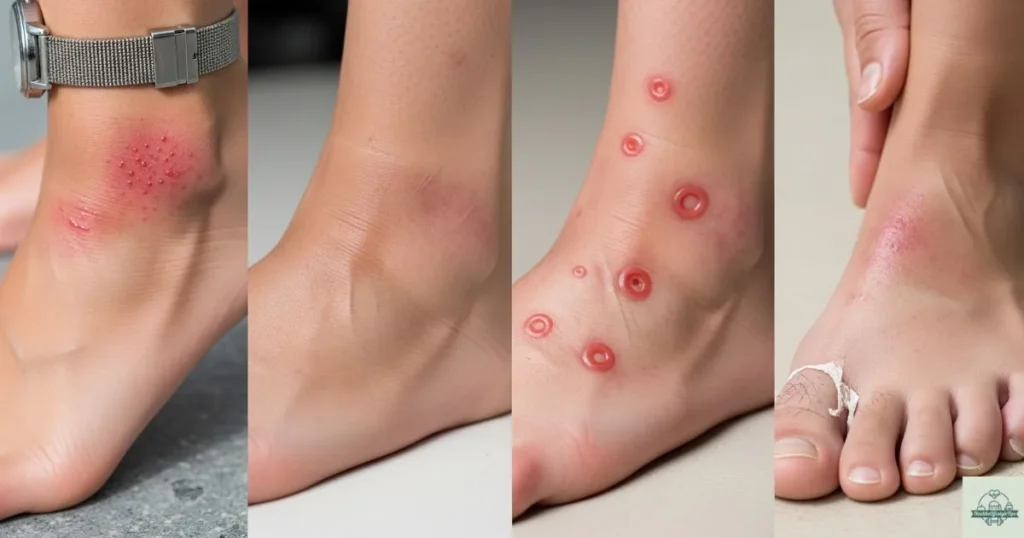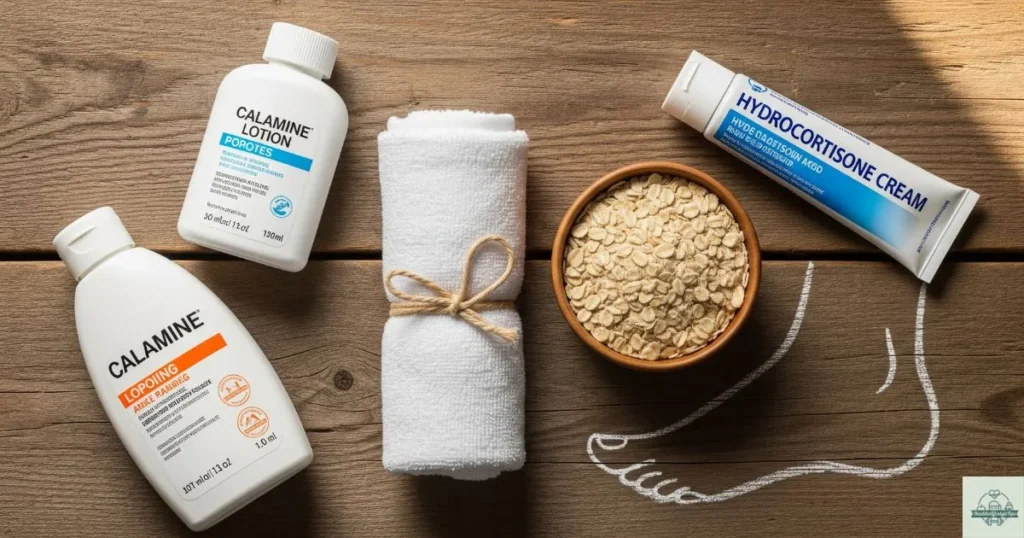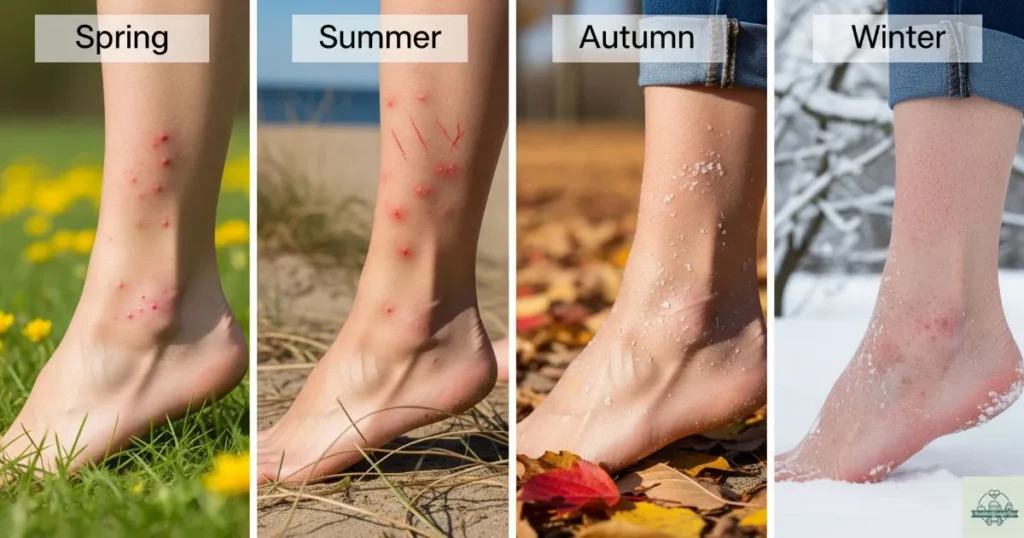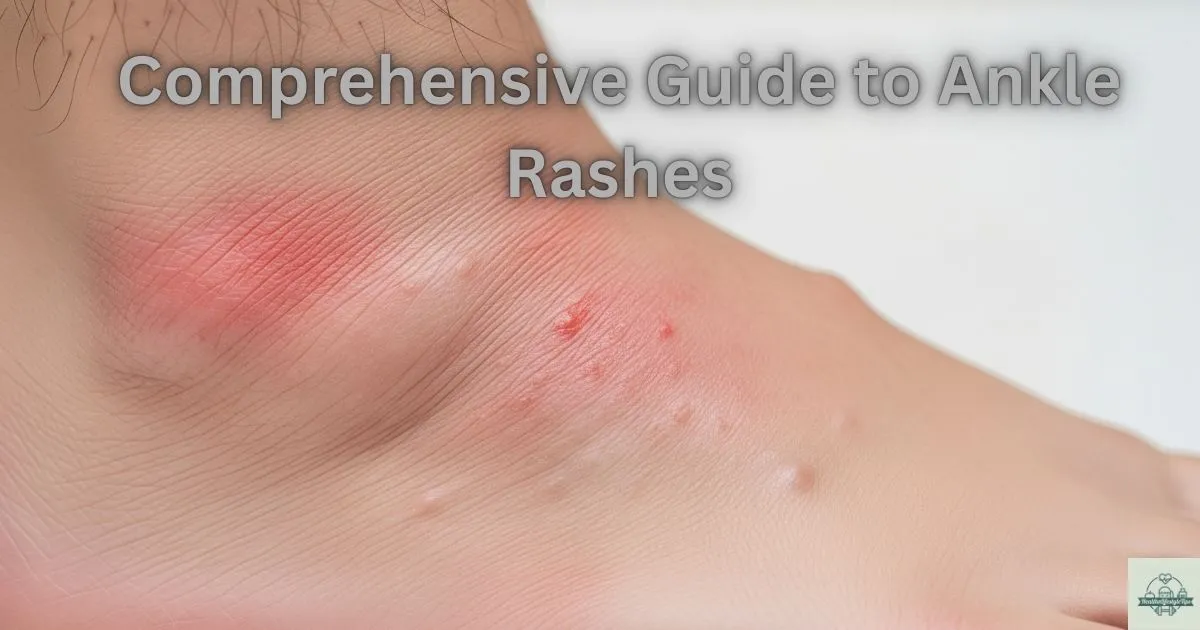Have you ever looked down at your ankle and found a mysterious, itchy, and maybe even bumpy patch of skin? You’re definitely not alone. Ankle rashes are super common and can pop up for all sorts of reasons, from something you touched to what you ate for lunch.
Figuring out what’s causing that pesky irritation is the first step to making it go away. Think of it like being a detective for your own skin! Once you know the culprit behind your ankle rash, you can find the right way to soothe it and get back to feeling comfortable. This guide will help you solve the mystery and learn how to keep your ankles happy and rash-free.
What Are the Common Causes of Ankle Rashes?

Your ankle rash could have many different causes, and figuring out which one is bothering you is like solving a puzzle. Let’s explore the most common troublemakers that might be causing your skin to act up.
Contact dermatitis happens when your skin touches something it doesn’t like. Maybe it’s a new soap, laundry detergent, or even the dye in your socks. Your skin basically throws a tantrum and gets red and itchy.
Eczema is when your skin gets super dry and irritated, creating patches that can drive you crazy with itching. It often runs in families so that you might have gotten this from your parents.
Fungal infections like athlete’s foot love warm, damp places. They can spread from between your toes down to your ankles, especially if you wear tight shoes or sweaty socks.
Allergic reactions can pop up from foods you eat, medicines you take, or even bug bites. Your body thinks these things are dangerous and creates a rash to protect you.
Sometimes sunburn can cause your ankles to turn red and peely if you forgot to put sunscreen on them during a day at the beach.
More serious causes include diabetes and liver problems, which can make your whole body itchy, including your ankles.
Read More: Foot problems can be surprisingly common.
What Are the Symptoms of an Ankle Rash?
Figuring out if you have an ankle rash is usually pretty easy because your skin will let you know something’s up. The most common sign is a red, angry-looking patch that won’t stop itching. You might feel like you have a thousand tiny mosquito bites that you just have to scratch!
Along with the itchiness, your ankle might feel a bit puffy or swollen. Sometimes, you’ll see tiny bumps, blisters, or even dry, scaly skin that feels rough to the touch. The colour can also change, looking reddish on lighter skin or a bit darker or purplish on darker skin tones. Paying attention to these clues can help you understand what your ankle rash is trying to tell you.
Read More: Broken or Bruised Toe
How to Identify the Underlying Cause of Your Ankle Rash?
Think of yourself as a detective trying to solve the mystery of your ankle rash! Start by asking yourself some simple questions. Did you try a new soap or lotion recently? Are you wearing different socks or shoes? Have you been walking through tall grass or playing outside more than usual?
Look at your rash closely. Does it have tiny bumps, or is it more like patches of dry skin? Is it spreading, or staying in one spot? These clues can help you figure out what’s bothering your skin.
If your rash won’t go away after a week, gets worse, or comes with fever or pain, it’s time to visit a doctor. They might do simple tests like checking your skin under a special light or taking a small sample to look at under a microscope.
Home Remedies and Over-the-Counter Treatments

Once you’ve spotted an ankle rash, you’ll want to calm that itch right away! The good news is you can find relief with simple things you might already have at home or can easily get from a store. A cool, damp cloth placed on the rash for about 15 minutes can feel amazing and reduce swelling.
Taking a lukewarm bath with some oatmeal mixed in can also be incredibly soothing for irritated skin. If you need a little more help, you can find special creams at the pharmacy. Calamine lotion is excellent for calming itchiness, and a mild hydrocortisone cream can help reduce redness and swelling. Just be sure to ask a grown-up for help before using any new cream.
When Should You See a Doctor for an Ankle Rash?
Most of the time, an ankle rash is just a minor annoyance that goes away on its own or with a bit of help from home remedies. But sometimes, your skin is trying to tell you that it needs a doctor’s help. If you notice yellow or green pus, or if the rash feels very warm and has red streaks spreading from it, it could be a sign of infection.
It’s also a good idea to see a doctor if your rash doesn’t get better after a week, or if it starts to spread. If your ankle rash comes with other symptoms like a fever, sore joints, or feeling super tired, a doctor can figure out if something more is going on. Don’t hesitate to get it checked out; it’s always better to be safe.
How to Prevent Ankle Rashes?
Wouldn’t it be great to stop an ankle rash before it even starts? Keeping your skin happy is easier than you think. A little care can go a long way in preventing that annoying itchiness.
One of the best tricks is to know what bothers your skin and stay away from it. If you figured out that a certain soap or lotion is the culprit, switch to a gentle, unscented one. Wearing socks made of soft, breathable materials like cotton can also help, as they let your skin breathe and prevent sweat from building up.
Another simple tip is to keep your ankles moisturised, especially if you have dry skin. Using a good lotion every day creates a protective barrier for your skin. By taking these small steps, you can help your ankles stay smooth, calm, and free from any unwanted redness.
Seasonal Triggers and Environmental Factors

Did you know that the weather outside can actually affect your skin? It’s true! Different seasons bring different challenges for your ankles, and understanding these patterns can help you stay one step ahead of any pesky skin problems.
During hot summer months, you might sweat more, which can trap moisture around your ankles and create the perfect playground for fungal infections. Plus, all that sun exposure can lead to sunburn if you forget to protect your lower legs. On the flip side, winter brings its own troubles with dry, cold air that can make your skin crack and become irritated.
Spring allergies from pollen and blooming plants can trigger reactions that show up as rashes on your ankles. Even changes in humidity levels can make your skin act up. The good news is that once you know what season tends to bother your skin the most, you can prepare for it! Keep your ankles moisturised in winter, use sunscreen in summer, and always listen to what your skin is telling you throughout the year.
Read More: Cheese-like smell under their toenails
FAQs About Ankle Rashes
Let’s answer some questions that lots of people wonder about when it comes to those pesky skin problems on their ankles.
Can stress cause an ankle rash?
You bet it can! When you’re super worried or stressed out about something big happening in your life, your body can react in surprising ways. Stress makes your immune system work differently, which can trigger skin problems like hives or make existing conditions like eczema way worse. Plus, when you’re stressed, you might scratch more without realising it, which can irritate your skin even more. So if you’ve been feeling anxious about school, family stuff, or anything else, that could definitely be connected to your ankle rash.
What’s the difference between eczema and psoriasis on the ankles?
Great question! Both can make your ankles look red and feel itchy, but they’re actually quite different. Eczema usually shows up as patches that look wet or weepy, and the skin feels really soft and sometimes even a bit squishy. It loves to hang out in areas where you bend and move a lot.
Psoriasis, on the other hand, creates thick, silvery scales that look almost like fish scales stuck on your skin. These patches feel much thicker and drier than eczema, and they often have obvious edges where the regular skin stops and the scaly part begins. Think of eczema as your skin crying, while psoriasis is more like your skin building up armour!
Conclusion
Now you know so much more about ankle rashes and how to handle them! Remember, most of the time, an ankle rash is just your skin’s way of telling you something needs attention, and it’s usually nothing to worry too much about.
The most important thing is to pay attention to what your skin is telling you. Look for clues about what might be causing the problem, try some gentle home remedies first, and don’t be afraid to ask a grown-up or doctor for help if things don’t get better.
Your skin is amazing at healing itself when you give it the proper care and attention. By keeping your ankles clean, moisturised, and protected from things that irritate them, you can prevent most problems before they even start. And if a rash does pop up, you now have plenty of tools to help it go away quickly and comfortably!
